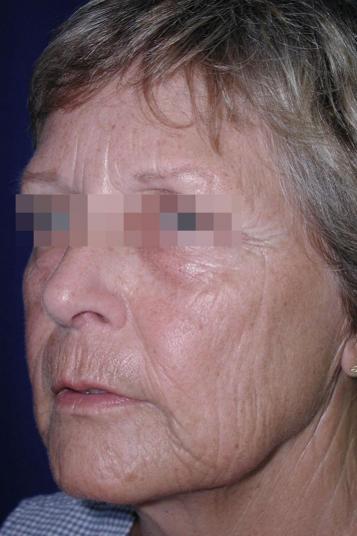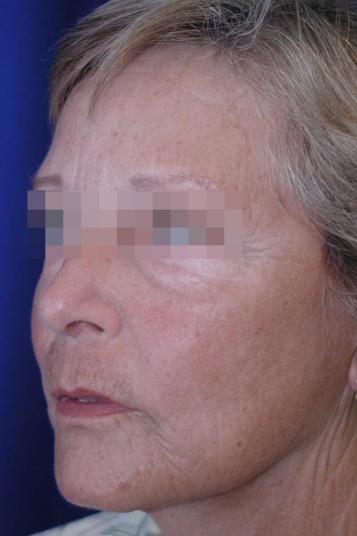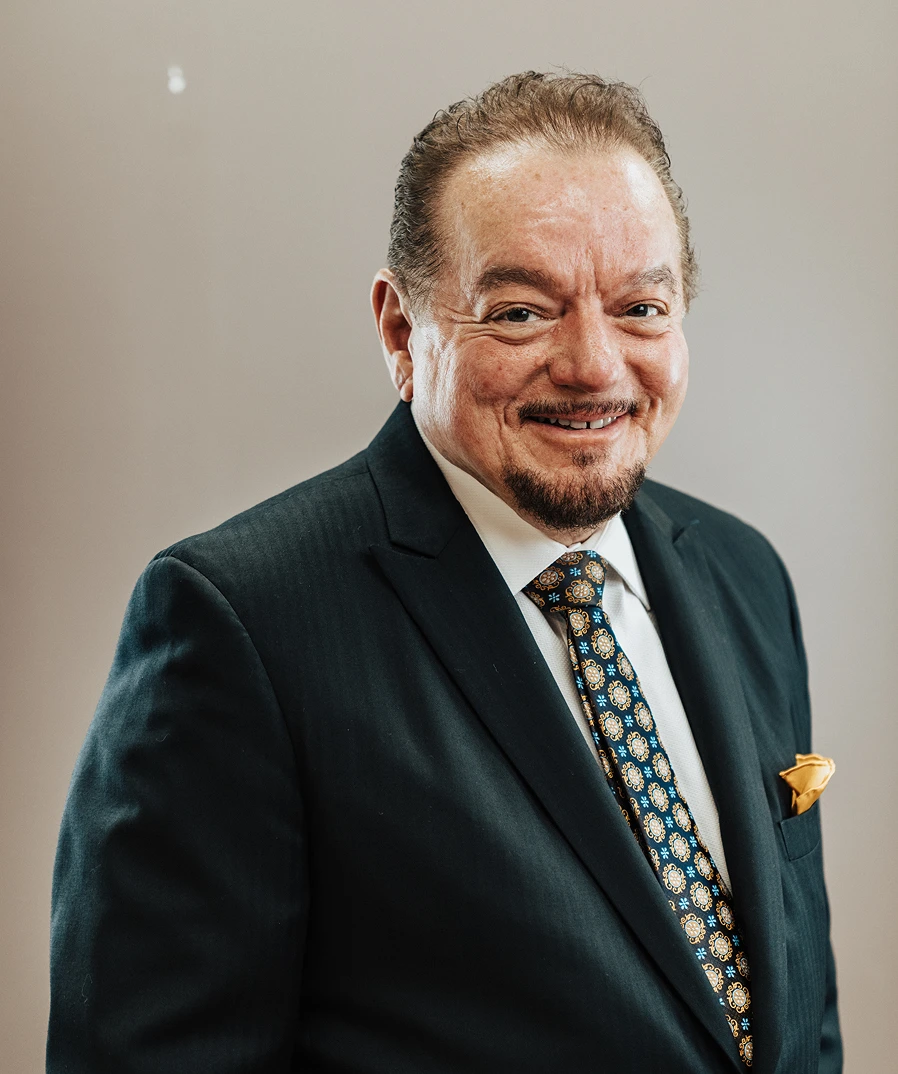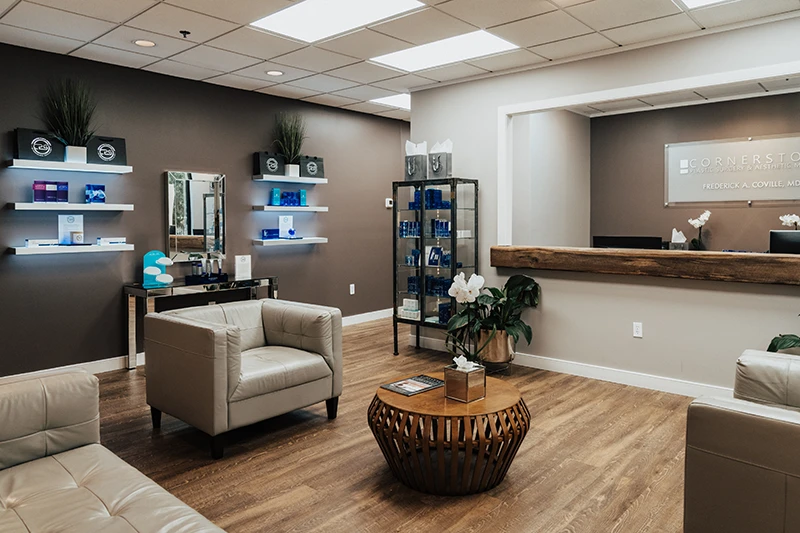Cornerstone Plastic Surgery has partnered with Rejuvenessence to bring you an expert-led Weight Loss Program. Learn More on our partner’s website!
A SMAS facelift (short for Superficial Musculoaponeurotic System) is an advanced facial cosmetic procedure designed to lift and reposition the deeper layers of soft tissue in the lower third of the face. Unlike the traditional surface-focused facelift, a SMAS facelift works the layers beneath the skin to target the connective tissue and muscles responsible for facial shape and support.
Its results? On average, a SMAS facelift lasts longer (up to 12-15 years) and is better able to replicate your own distinct, naturally younger-looking features.
During an SMAS facelift surgery, the SMAS layer of tissue, located just beneath the face’s superficial skin and fat, is adjusted and tightened to reverse sagging in the cheeks, jawline, and neck. This allows for more structural correction without over-pulling the skin, leading to smoother, sharper, and more youthful contours. The SMAS facelift technique is ideal for patients with moderate to significant facial aging, as this procedure delivers deep and nuanced improvements fitting more advanced signs of aging.
A SMAS facelift allows for more precise manipulation of the face’s foundational tissue, leading to subtler yet more custom results. Yet it’s essential to understand the anatomical differences between traditional facelifts versus SMAS versus deep plane facelift techniques.
While each method repositions some facial tissue, a SMAS facelift offers a middle-ground approach that selectively elevates the SMAS tissue layer without having to disrupt any deeper ligaments and nerves. This makes it an excellent choice for patients seeking more meaningful facial rejuvenation that goes past skin-only correction, but with reduced surgical risks and a shorter recovery timeline.
As collagen diminishes with age, the skin and underlying SMAS layer will inevitably lose tension, resulting in sagging around the jawline. This commonly affects individuals over 40 and creates an undefined lower facial contour. A SMAS facelift repositions the SMAS layer to correct jowling and restore a sharper, more defined jawline.
Volume descent in the mid-face can deepen nasolabial folds and flatten the cheeks. This condition occurs due to the gravitational pull on facial fat pads and weak underlying SMAS tissue support. By elevating the SMAS layer, this facelift type provides better mid-face lift and stronger cheek volume redefinition.
The SMAS layer extends through the neck to the collarbone. When weakened due to age, gravity, and genetics, it contributes to vertical bands and sagging neck skin, most prevalent starting in your late 40s to early 50s. A SMAS facelift supports the neck’s core platysmal area, smoothing the neck’s surface and improving chin-to-neck angles.
It’s extremely common for facial aging to occur unevenly, with one side sagging slightly more than the other. By independently repositioning the SMAS layer on either side of the face, this procedure allows for more tailored correction and symmetry, a key benefit not easily achieved with more superficial facelift types.


Witness the dramatic yet natural-looking transformation that a SMAS facelift can deliver. Our patients experience visibly restored facial contours, smoother skin, and renewed confidence.
The SMAS facelift technique specifically addresses the connective tissue, musculature, and fascial support sitting just beneath the skin, offering a comprehensive yet controlled rejuvenation from the cheekbones to the neck.
We often get asked how this approach compares to a deep plane facelift. The main distinction between SMAS vs deep plane facelift lies in each of their surgical depths and anatomical targets.
With over 25 years in cosmetic surgery, Dr. Fred brings both artistry and surgical expertise to every SMAS facelift he performs.
During SMAS facelifts, the SMAS layer is separated and re-worked independently from the skin, allowing for deeper, structural correction without pulling the skin too tightly. This helps deliver the signature smooth, natural results Dr. Fred is well known for with this facelift type.
By adjusting both the SMAS and skin layers separately, a SMAS facelift’s technique can address sagging at multiple anatomical depths, providing a more complete facial contour while minimizing tension scars.
Dr. Fred uses strategically placed incisions that follow the natural tension lines of the face, lifting tissues vertically or obliquely based on each patient’s facial architecture.
Unlike superficial “mini” facelifts, a SMAS facelift allows for surgical improvements to the platysma muscle layer located in the neck, improving sagging neck tissue and restoring a sharper jawline and more attractive collarbone in one surgery.

Frederick A. Coville, M.D., Cornerstone Plastic Surgery’s Owner and Medical Director, has been an Aesthetic and Reconstructive Plastic Surgeon for over 25 years. He firmly believes each of us possesses an inner “Foundational Beauty.”
As a student of beauty all his life, he calls upon his naturally artistic eye and God-given talents as a surgeon to deliver the results you demand. Dr. Fred likes to say, “It’s my job to help you find Your Beautiful!”
Request your consultation and let us create a custom experience for you
Membership
Dr. Fred Coville is not only a board-certified aesthetic and reconstructive plastic surgeon, but a deeply respected expert with a long-standing reputation for excellence in facial procedures. He completed rigorous surgical training in New York, including a Surgical Residency at Maimonides Medical Center, a Burn Fellowship at Nassau County Medical Center, and a Plastic Surgery Residency at Manhattan’s renowned Mount Sinai Medical Center where he served as Chief Resident in Plastic Surgery.
Dr. Fred has practiced globally, caring for patients in Manhattan and serving diverse populations in the Eastern Caribbean. His background includes presidency roles in the BVI Cancer Society and Medical & Dental Association. Best known for his combined approach to facial rejuvenation, he integrates mechanical, injectable, and surgical techniques to deliver results that are both dramatic and naturally beautiful. With Dr. Fred, artistry meets precision to uncover your most confident self.
At Cornerstone Plastic Surgery in Linwood, NJ, Dr. Fred creates a boutique, patient-centered experience designed to provide complete education, comfort, and exceptional outcomes. Read on to understand each step of the SMAS facelift process, from consultation to your final reveal.
During your initial consultation, Dr. Fred will conduct a detailed anatomical assessment, reviewing your goals, facial structure, and medical history. He will walk you through expected outcomes, recovery, and outline certain facelift risk factors. You’ll also see a customized preview of your results using 3D rendering technology, ensuring clarity and confidence from the start.
To prepare for your surgery, you’ll be advised to stop smoking, avoid blood-thinning medications, and follow a tailored skincare routine to optimize your skin integrity. Dr. Fred may recommend prescription products to reduce inflammation and support tissue healing.
On surgery day, you’ll arrive at our Linwood surgical suite and change into your pre-op garments. After pre-surgical vitals are checked, anesthesia is administered, typically general anesthesia or IV sedation.
During an SMAS facelift, Dr. Fred will make precise incisions typically around the ears and hairline, then elevate and reposition the SMAS layer using specialized instruments. The procedure typically takes 3–4 hours. Post-op, you’ll recover in a monitored suite before being safely discharged home with a caregiver.
A patient’s first follow-up is typically scheduled within 5-7 days post-op. Dr. Fred will examine surgical incisions, check for signs of proper healing (like reduced swelling, no hematoma, and appropriate skin coloration), and ensure all dressings are secure. Additional visits will follow based on your healing progress and needs.
Recovering from a SMAS facelift varies based on the patient. Dr. Fred and the Cornerstone care team will help outline your realistic healing timeline that accounts for the following benchmarks:
Patients with moderate-to-advanced signs of facial aging often get the best results from a SMAS facelift, especially compared to other versions of facelifts, thanks to its deeper structural correction and longer-lasting results. An SMAS facelift may be your best option if you have:
Recovery from a SMAS facelift in Jersey Shore unfolds in distinct stages, each reflecting the healing process as tissue settles, heals, and integrates fully with your face and neck features.
The SMAS facelift technique delivers results that go beyond the skin’s surface, restoring better-supported facial structure, symmetry, and vitality at its foundation. Its benefits include:
While complications are rare, any surgical procedure involves risk. Choosing an expert like board-certified 25+ year veteran Dr. Fred and the Cornerstone Plastic Surgery care team helps minimize surgery risks through meticulous technique and attentive care.
The most common SMAS facelift risks include:
Combining facial procedures is a fantastic option to optimize your final appearance while minimizing anesthesia time. At Cornerstone Plastic Surgery, Dr. Fred also offers patient-friendly financing options to make full transformations more accessible.
Tightens the platysma and removes neck laxity, ideal for those with significant jowls or skin sagging.
Refines ear shape and position, often requested to complement facial balance during a facelift.
Reduces eyelid drooping and puffiness, restoring an alert and youthful upper facial expression.
Removes localized fat deposits under the chin, along the jawline, or other desired parts of the body, enhancing the sculpted results of a SMAS lift directly or more broadly turning back the clock.

Your transformation begins with a consultation. Dr. Fred will review your goals, assess your facial structure and skin health, and tailor a plan that’s medically sound and aesthetically inspiring.
Book a ConsultationDiscover more about facelift surgery and facial rejuvenation with these resources from Cornerstone Plastic Surgery’s blog.
It depends on the patient’s anatomy and goals. SMAS facelifts offer precision with fewer nerve risks—ideal for many patients.
On average, results last 10–15 years, depending on skin quality, lifestyle, and ongoing care.
If you’re experiencing early signs of facial aging or jowling in your 40s or 50s, you may be an ideal candidate.
Most patients return to social activities within 10–14 days, with full healing in 3–6 months.
Incisions are placed discreetly along the hairline and ear creases—Dr. Fred uses refined closure techniques to minimize scarring.
Most SMAS facelifts are performed under general anesthesia or IV sedation for patient comfort and safety.
Not with Dr. Fred. His approach emphasizes natural movement and proportion attuned to your exact features, never an over-pulled or artificial appearance.

Written By: Dr. Frederick Coville Frederick A. Coville, Cornerstone Plastic Surgery’s Owner and Medical Director